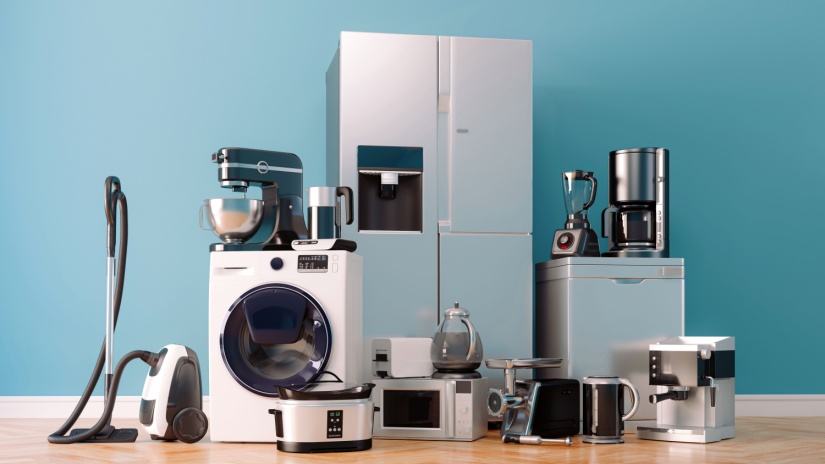Knowledge Centre
Most expensive appliances to run

In the modern Australian household, a variety of appliances consume significant amounts of energy. From heating to cooling and everything in between, some devices are particularly energy-hungry, impacting both the environment and household energy bills.
Understanding which appliances are the most expensive to run in terms of energy usage is crucial for making informed decisions about your household's energy consumption.
This article will provide an in-depth look at some of the most energy-intensive appliances commonly used in Australian homes and offer comparisons across different states.
We'll also take a look at the difference in energy usage when relying on electricity versus solar power, providing you with insights into how your energy choices impact your household.
Please note that this article does not compare costs for running different appliances as the cost can vary widely based on the energy provider and specific pricing plans. Costs are highly dependent on these factors, as well as on local tariffs and whether a household uses grid electricity or solar power.
The most energy-hungry appliances
Air conditioners
Air conditioning is one of the biggest energy users in Australian homes, particularly in tropical and subtropical climates like Queensland, where the need for cooling is more frequent due to the hot and humid weather. Air conditioners can consume vast amounts of energy, especially when running for extended periods.
Key considerations:
- Tropical regions (e.g. Queensland, Northern Territory) often experience long hot spells, leading to continuous air conditioning use, which can significantly increase energy consumption.
- Southern regions (e.g. Victoria, Tasmania) use air conditioning less frequently, typically for shorter durations during the warmer months.
- Air conditioners' energy usage varies depending on the model (e.g. reverse cycle, split system), room size, and the setting on the thermostat.
Electric heaters
While air conditioning is more common in warmer states, electric heaters are often the primary source of heating in cooler regions of Australia, such as Victoria and Tasmania, where winters can be particularly harsh.
Electric heaters come in various forms, including panel heaters, convection heaters, and oil-filled radiators, all of which can consume substantial amounts of energy when used frequently.
Key considerations:
- Cooler regions (e.g. Tasmania, Victoria, and southern New South Wales) experience prolonged heating needs, especially during winter months.
- Electric heating can be more energy-efficient in short bursts but using them for long periods at higher temperatures can lead to high energy consumption.
- Heaters are often used in smaller, enclosed spaces, which can make them run more intensively in an attempt to heat the room.
Water heaters
Water heating is another appliance that can drive up energy usage in Australian homes. Electric hot water systems - whether they are storage or instantaneous systems - use large amounts of energy to heat water for showers, baths, laundry, and other household tasks.
Key considerations:
- Hot water systems are typically used throughout the day and night, increasing their overall energy demand.
- Energy consumption is higher in households with larger families or those that use hot water more frequently.
- Solar hot water systems can help reduce energy consumption, as they rely on sunlight rather than electricity. However, their efficiency can vary depending on location and available sunlight.
Ovens and cooktops
Cooking appliances like electric ovens and cooktops also use a significant amount of energy, especially when used for extended periods or for cooking large meals.
Though often considered a necessity, these appliances contribute to household energy use.
Key considerations:
- Cooking times can vary significantly, and using the oven for prolonged periods during meal preparation can consume more energy.
- Induction cooktops, which use less energy than traditional electric cooktops, have become a popular choice for reducing energy consumption in the kitchen.
Clothes dryers
Despite Australia's warm climate, many households still rely on electric clothes dryers, especially during the rainy season or in cooler regions where clothes might not dry quickly outdoors.
Clothes dryers can be energy-intensive, particularly when used frequently or for large loads of laundry.
However, nature's tumble dryer - using a clothesline outside - can be a much more cost-effective option. Hanging clothes outside to dry not only saves energy but also prevents wear and tear on fabrics that can result from regular dryer use.
In many parts of Australia, taking advantage of sunny days can significantly reduce energy consumption, especially during the warmer months when drying clothes naturally is an easy and effective alternative.
Key considerations:
- Clothes dryers can be energy-intensive, particularly when used frequently or for large loads of laundry.
- Using a dryer rather than air drying clothes significantly increases energy consumption, especially when the appliance is used during peak periods.
Refrigerators and freezers
Though essential, refrigerators and freezers are consistently running appliances, meaning they consume energy 24/7.
Over time, they can become major energy consumers, especially older models that are less energy efficient.
Key considerations:
- Older models tend to consume more energy, while modern energy-efficient refrigerators are designed to use less energy while providing the same level of performance.
- Freezers can be even more energy-intensive when they are running constantly, as they need to maintain a very low temperature.
Comparing energy usage across Australian states
The energy consumption of various appliances can differ significantly depending on geographical location and climate.
Below is a comparison of how different appliances impact energy consumption in various Australian states, with a focus on air conditioning and heating usage.
| State/territory | Air conditioning | Electric heating | Water heating | Clothes drying | Refrigeration |
| Queensland | High - hot and humid climate | Low - mild winters | Moderate | Moderate | High |
| New South Wales | Moderate - hot summers | Moderate - cooler winters | High | Moderate | High |
| Victoria | Low - cooler summers | High - cold winters | High | Low | High |
| Tasmania | Low - cool summers | High - cold winters | High | Low | Moderate |
| Northern Territory | High - very hot and humid | Low - mild winters | Moderate | Moderate | High |
| South Australia | Moderate - hot summers | Moderate - cool winters | High | Low | High |
| Western Australia | Moderate - hot summers | Low - mild winters | High | Low | High |
Running appliances on solar power vs electricity
One significant consideration when managing energy usage is the power source. Solar power can be a great way to reduce the environmental impact and the reliance on grid electricity.
However, the effectiveness of solar energy depends on several factors, including geographic location, time of year, and the size of the solar system.
Advantages of solar power for household appliances:
- Renewable energy: Solar power is a clean and renewable energy source, significantly reducing your reliance on non-renewable resources.
- Lower carbon footprint: Using solar power for appliances like air conditioners, water heaters, and refrigerators helps lower your carbon emissions, contributing to a greener household.
- Self-sufficiency: Solar energy provides greater independence from the grid, reducing your dependence on fluctuating energy prices from electricity providers.
Limitations of solar power:
- Weather dependency: Solar power generation is heavily reliant on sunlight, meaning during cloudy days or at night, households must draw power from the grid.
- Initial investment: While solar power reduces energy costs over time, the upfront cost of installing solar panels and batteries can be significant.
- Efficiency variability: Solar power systems are more effective in certain states, such as Queensland, where sunlight is abundant, compared to southern regions where weather patterns may limit efficiency.
In regions where solar energy is abundant, appliances that typically consume high amounts of electricity, like air conditioners and water heaters, can be run more efficiently, reducing the need to draw power from the grid.
Connect with Compare Energy
Understanding which appliances consume the most energy is essential for managing your household’s energy consumption effectively.
Appliances such as air conditioners, electric heaters, and water heaters can significantly impact your energy use, particularly in certain regions of Australia. By opting for solar power or choosing more energy-efficient models, you can mitigate some of these impacts and reduce your reliance on electricity from the grid.
No matter where you live in Australia, it’s important to consider how climate, appliance usage patterns, and energy sources affect your household’s overall energy consumption.
Being mindful of these factors will help you make informed decisions and ultimately reduce both your environmental footprint and reliance on expensive electricity.
If you want to save money on energy usage and learn more about running your appliances efficiently, call Compare Energy at 1300 790 106 today to discuss your options and find the best energy plan for your household.

